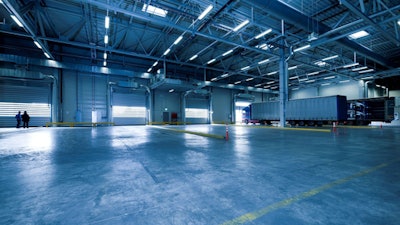
U.S. trade policy, while unusually disruptive in scope, reflects the most acute expression to date of long-running structural trends, including the pursuit of nearshoring, supply chain redundancy, and domestic (advanced) manufacturing capacity. If the current volatility accelerates a shift toward more diversified, resilient, and regionally distributed supply chains, then the long-term impact on U.S. logistics demand is likely to be structurally positive, according to data produced by Trammell Crow Company.
“A more geographically redundant supply chain, one that favors regional distribution networks and manufacturing-adjacent logistics hubs, requires more—not less—physical infrastructure to support it,” says Louis Rosenthal, director of global research development for Trammell Crow Company.
Key takeaways:
· The growing share of imports from Mexico underscores the deliberate movement of production capacity toward regional alternatives that offer lower geopolitical risk and shorter transit times to U.S. markets.
· Higher inventories at the production level should translate into greater and more consistent demand for warehousing capacity, particularly in locations tied to manufacturing, regional distribution, and modal flexibility (i.e., the ability to shift between truck, rail, and air freight). Expect that the current trade turbulence will encourage companies to further embed resiliency into supply chain strategies such that inventory buffering remains a structural feature of how goods move through the economy.
· Growth in advanced manufacturing is expanding the geographic footprint of logistics demand while at the same time reshaping the U.S. industrial base.
· On one side, inventory buffering, regional distribution, and modal flexibility continue to support logistics demand tied to broader supply chain distribution. On the other, advanced manufacturing sectors—including semiconductors, EVs, and clean energy—are generating growing demand for manufacturing-adjacent logistics. Together, these forces are expanding the need for both regional distribution capacity and facilities positioned near critical production hubs.
· There are five key assumptions expected to shape the long-term evolution of global supply chains: supply chains will become more geographically redundant; inventory strategies will remain structurally higher; regionalization will partially replace hyper-globalization; national industrial policy will anchor new logistics nodes; and optionality will become a core location strategy.
“The current trade conflict has heightened attention to supply chain realignment, but the long-term drivers of logistics demand remain rooted in structural shifts that began years ago. For industrial real estate, these shifts will sharpen distinctions across markets and submarkets, rewarding locations that align with new distribution patterns, manufacturing clusters, and diversified supply chains,” says Rosenthal.

![Pros To Know 2026 [color]](https://img.sdcexec.com/mindful/acbm/workspaces/default/uploads/2025/08/prostoknow-2026-color.mduFvhpgMk.png?auto=format%2Ccompress&bg=fff&fill-color=fff&fit=fill&h=100&q=70&w=100)







![Pros To Know 2026 [color]](https://img.sdcexec.com/mindful/acbm/workspaces/default/uploads/2025/08/prostoknow-2026-color.mduFvhpgMk.png?ar=16%3A9&auto=format%2Ccompress&bg=fff&fill-color=fff&fit=fill&h=135&q=70&w=240)









